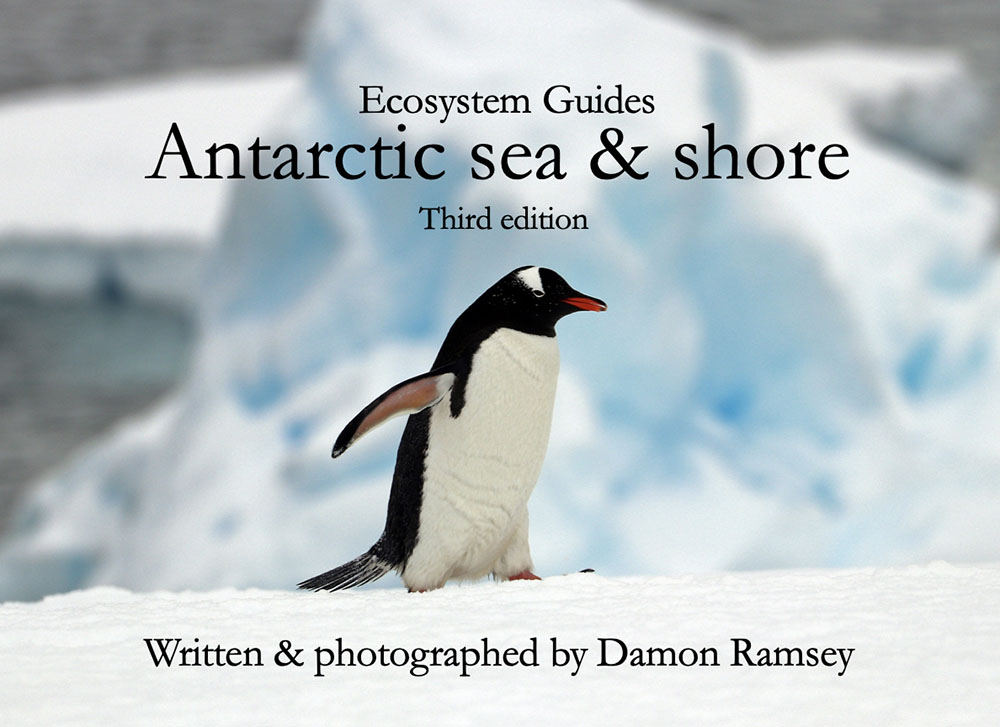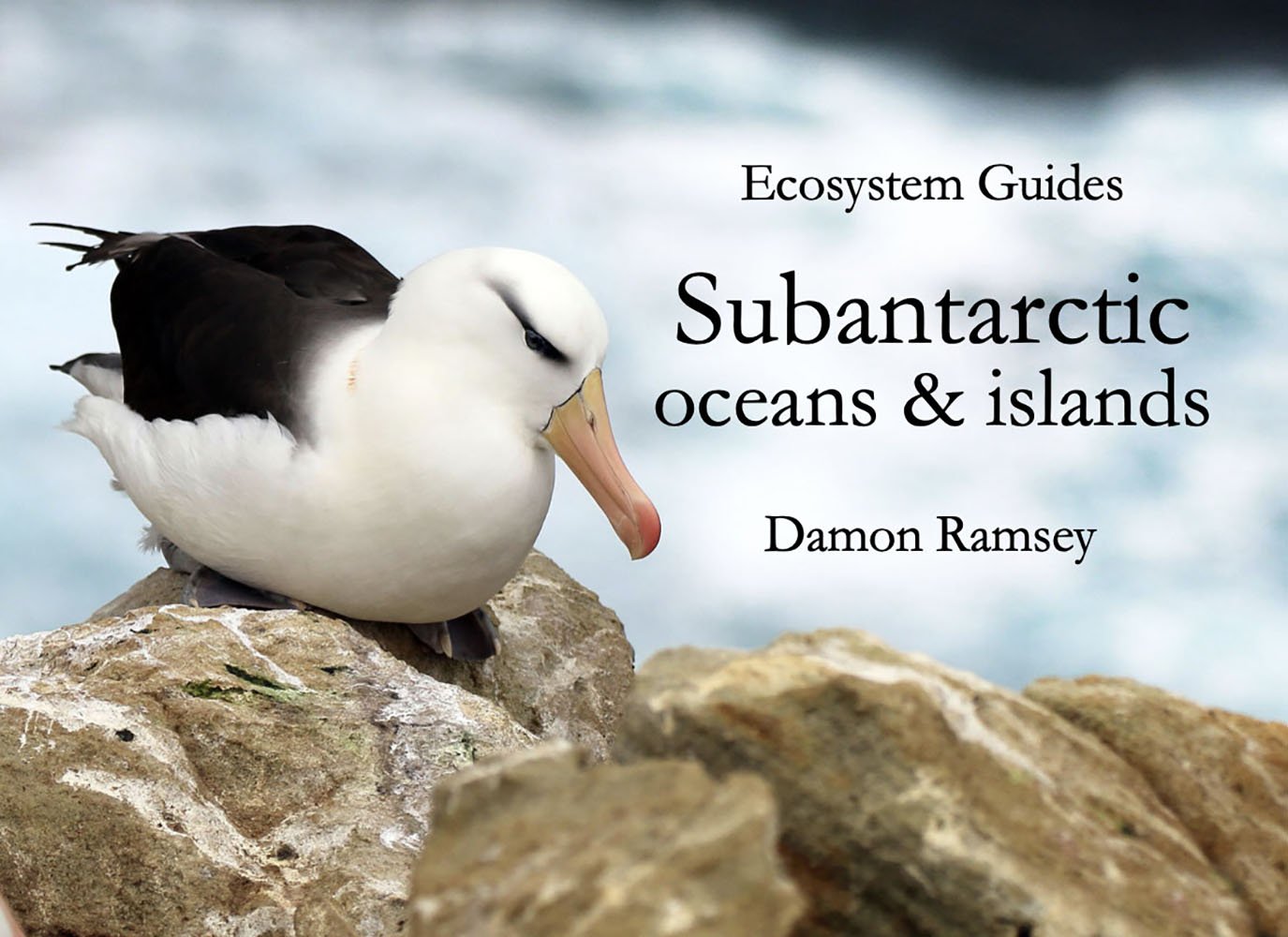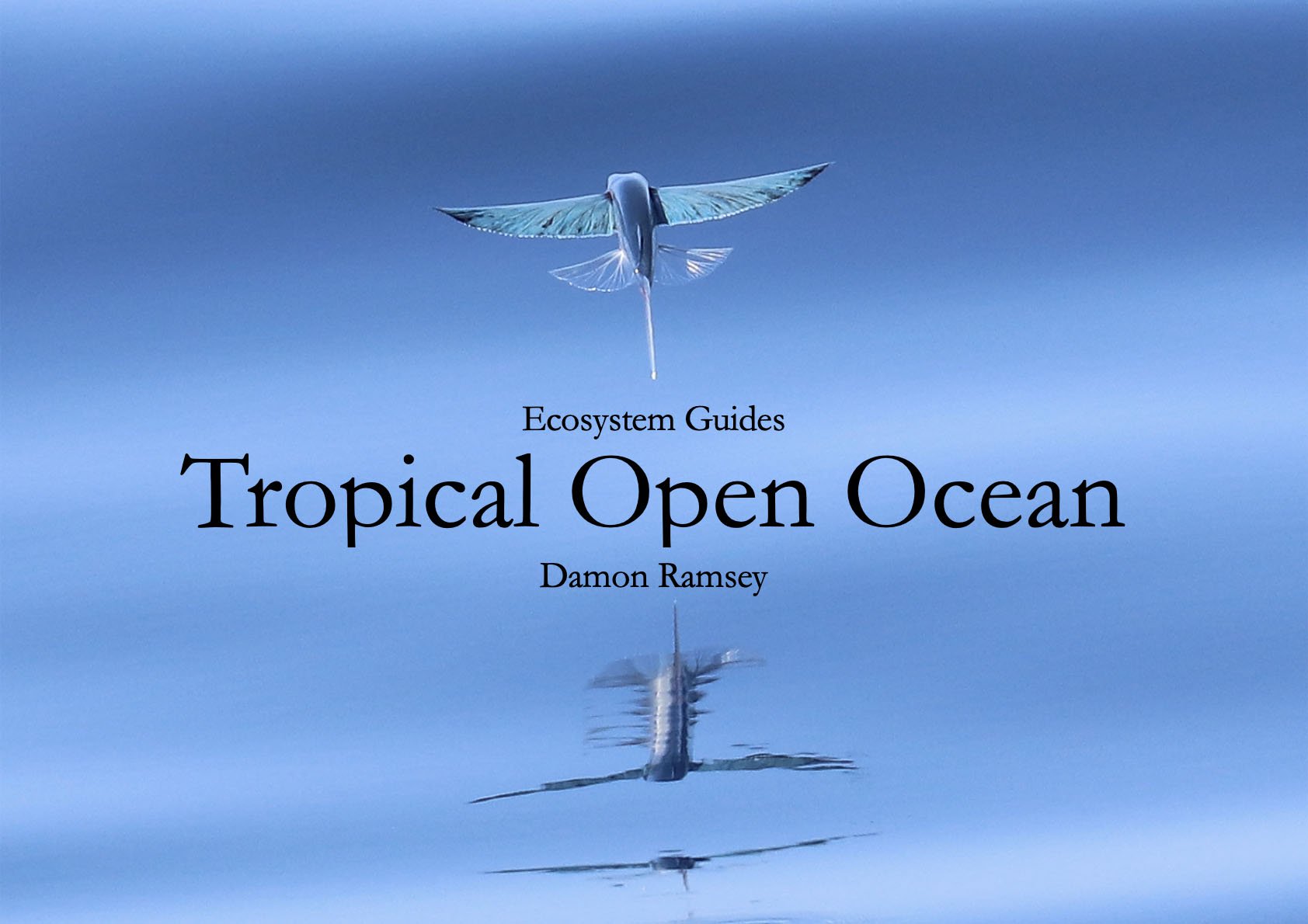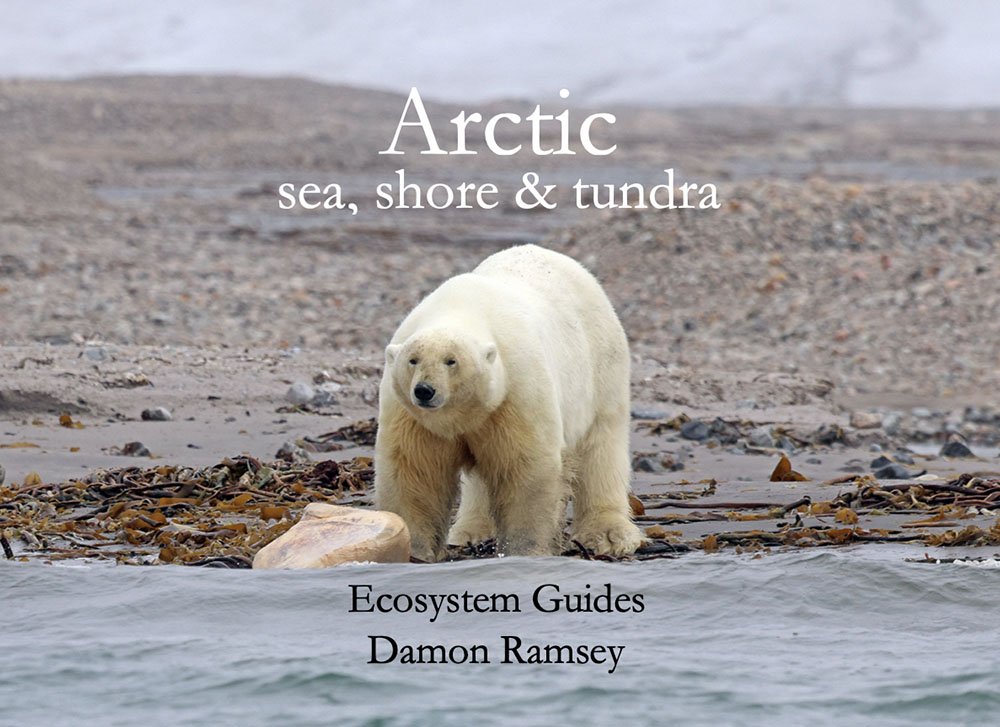ecosystem-guides.com
....exploring the planet's ecosystems
AFROTROPICAL
Freshwater (Rivers, Lakes & Wetlands)
The wetlands of Africa are extensive, and contain huge lakes such as the Sudd, Lake Victoria and the famous Okavango Delta.
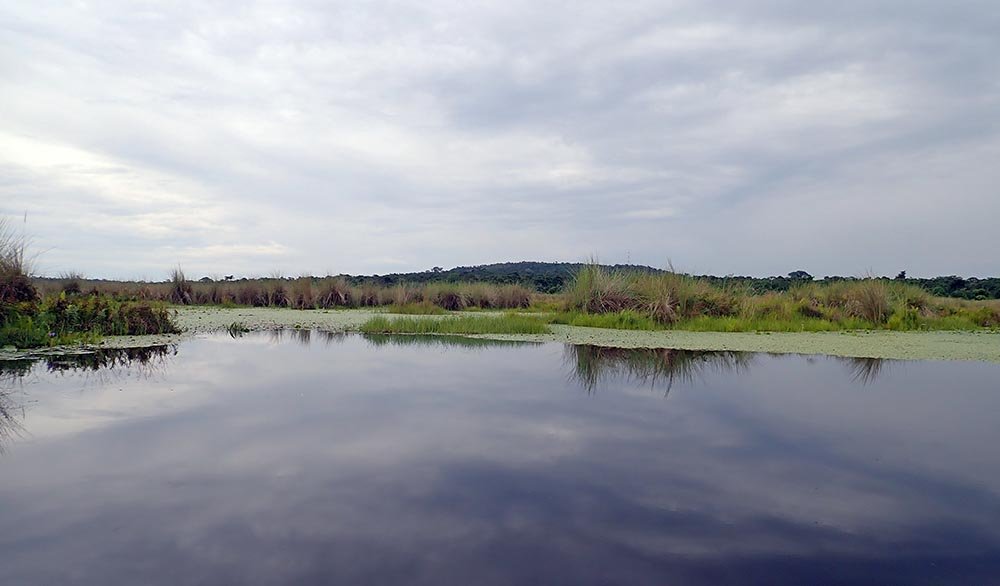 (Lake Victoria)
(Lake Victoria)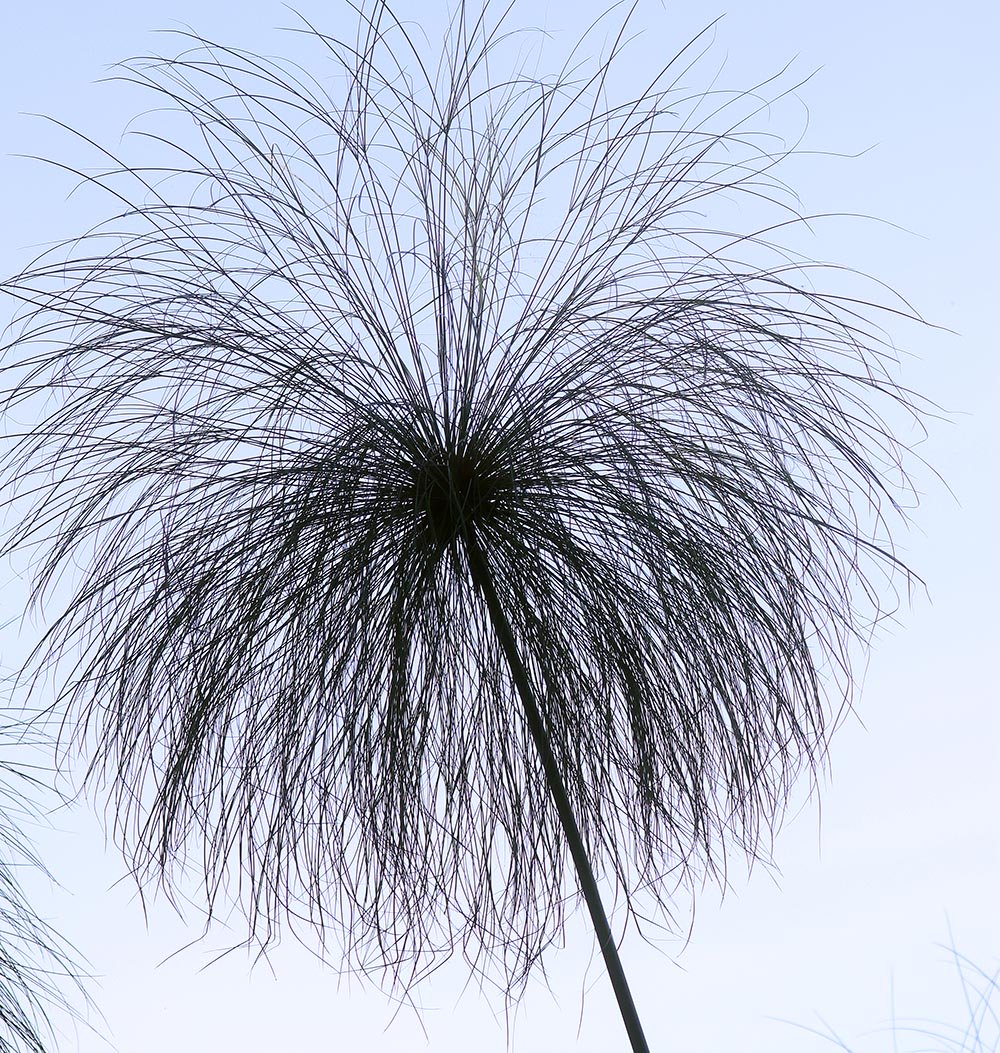
There are a small suite of plants that are hydrophilic; that is is, they live exclusively in, on, or directly around freshwater. Across Africa, the most obvious species is the Cyperus papyrus, 'Papyrus'.
But perhaps the most famous and striking of the African wetland flowers is the Nymphea nouchali (caerulea), 'Water Lily'. This is a species with many forms around the world. It is also now widely cultivated. Unfortunately, it is also associated with the snail that is the main host for (human) schistosomiasis.
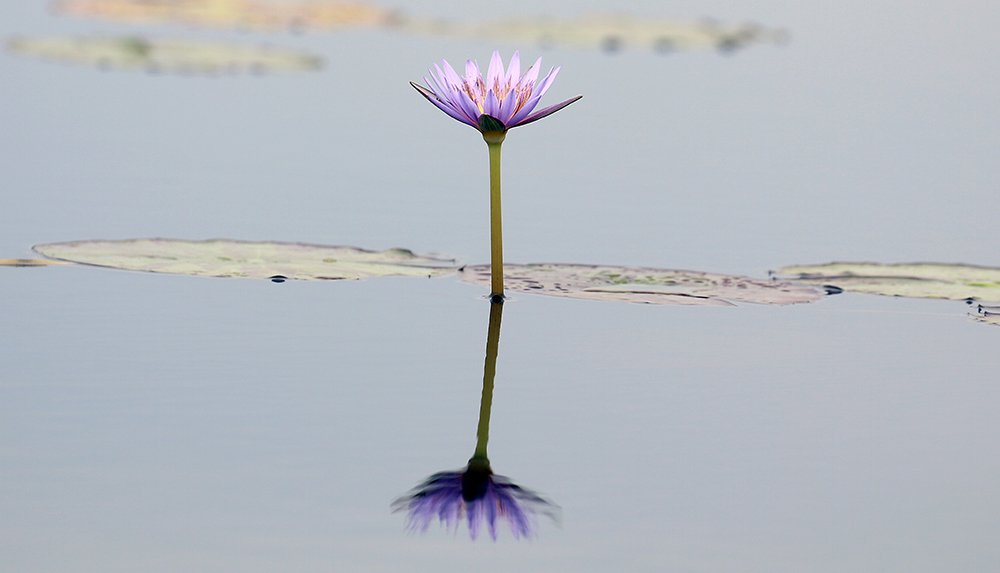
While there are many species of frogs, most are nocturnal, so finding them in African wetlands can be dangerous given the wildlife around at night. It is best to restrict your frogging to the pond in your backyard!
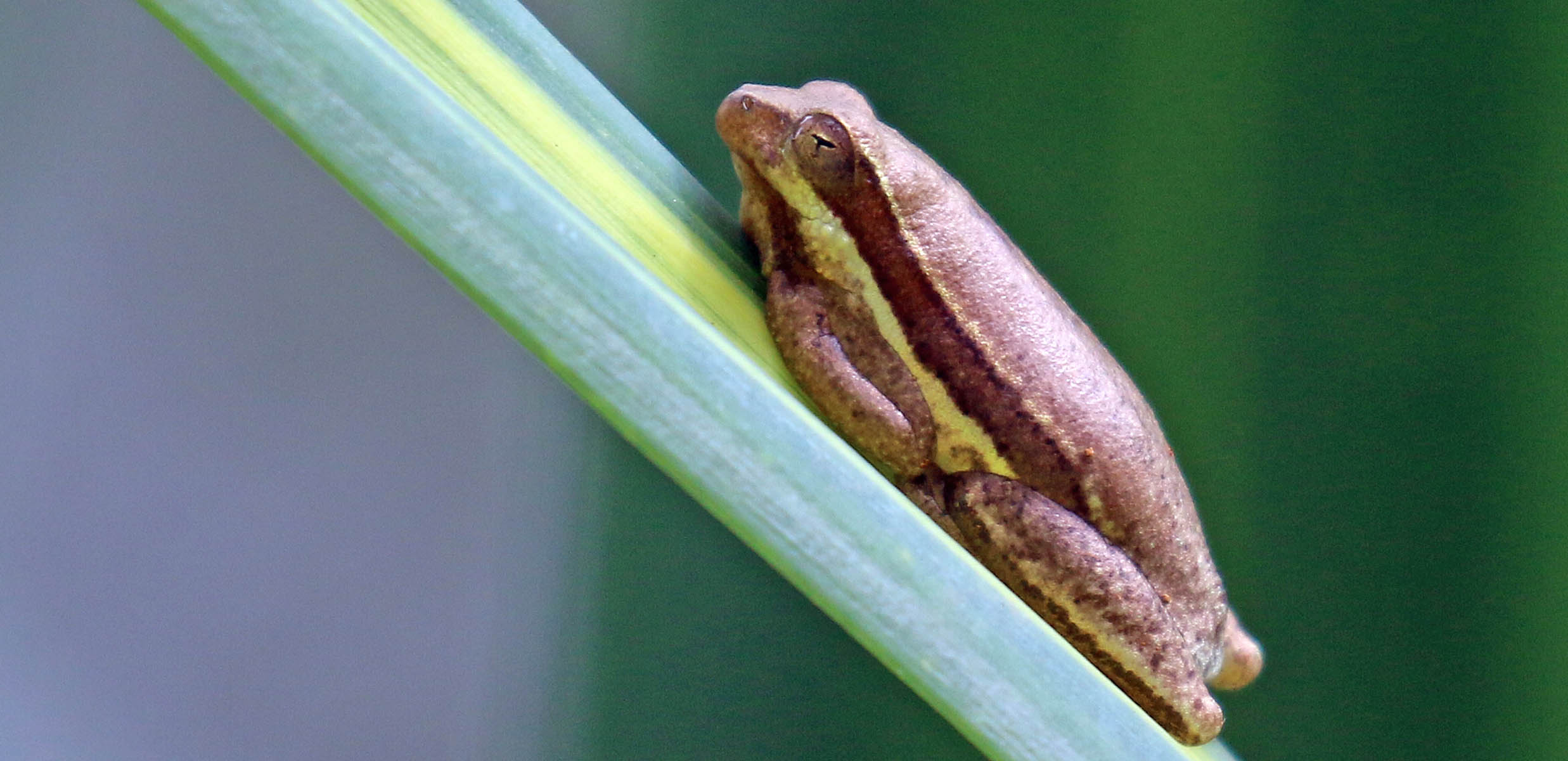
The biggest predator in the fresh water is of course the African Crocodile. While it doesn't grow quite as big as the Indo-Pacific crocodile, it is just as dangerous to humans (and other animals).
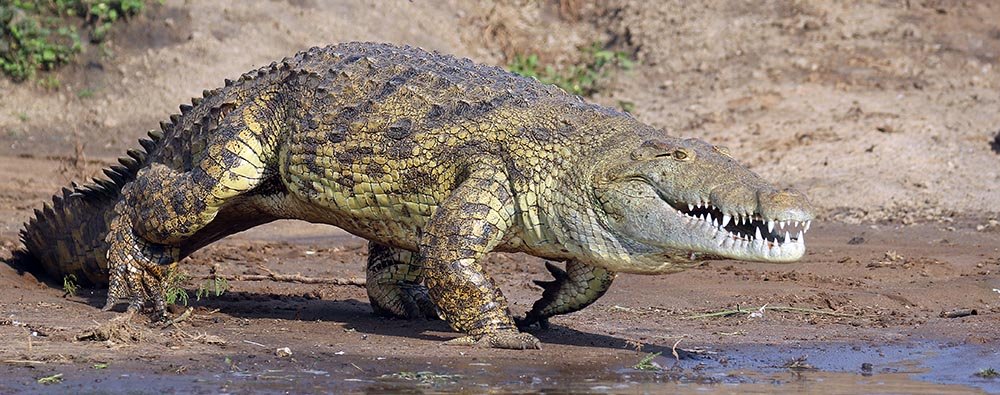 To warm up their body, they bask near the water's edge. To cool down, they slip into the water. Or have a refreshing cold beer.
To warm up their body, they bask near the water's edge. To cool down, they slip into the water. Or have a refreshing cold beer.Birds are easy to spot on the open wetlands in Africa. This habitat includes some common and widespread species, such as Ducks and Egrets.
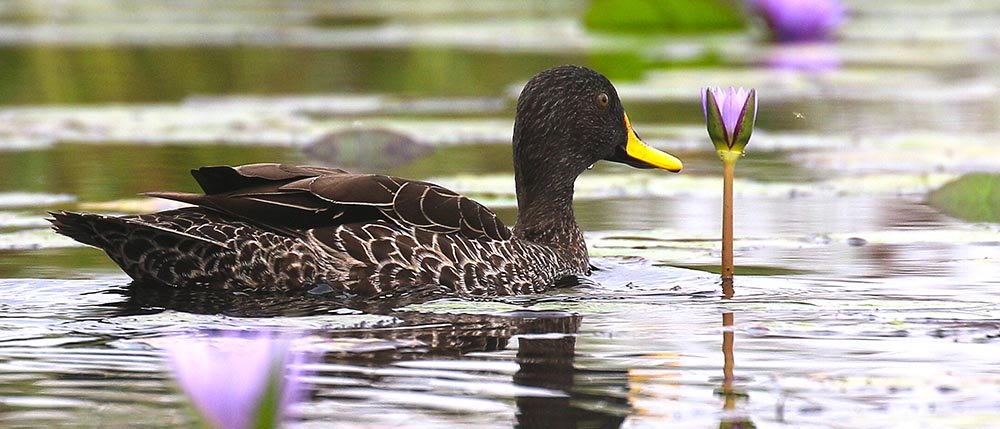 'Yellow-billed Duck'.
'Yellow-billed Duck'.Classic and distinctive African waterbird species include:
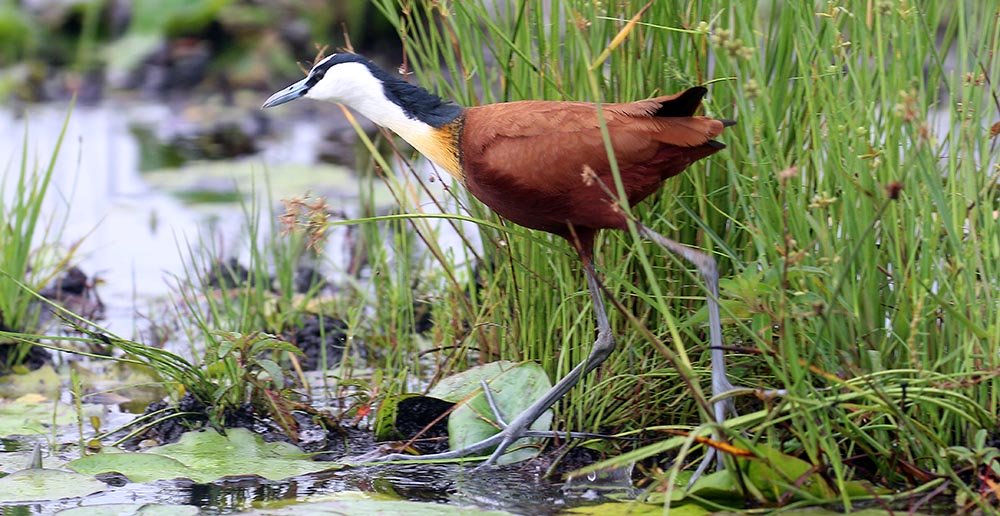 "African Jacana'.
"African Jacana'.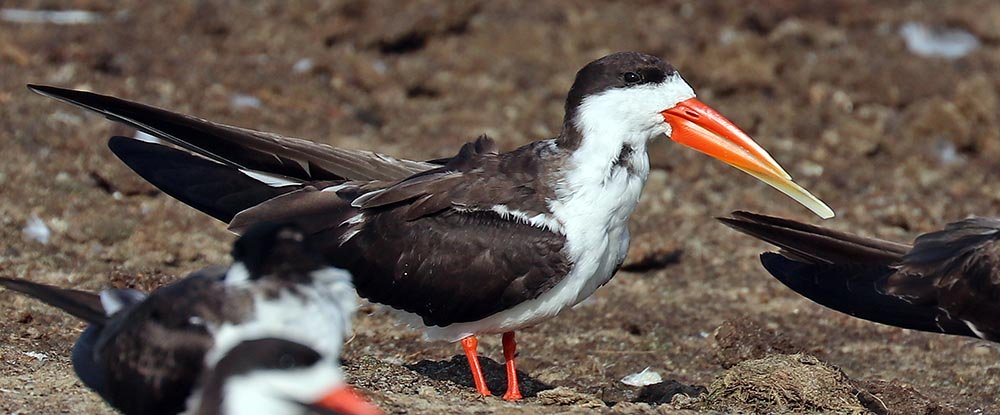 'African Skimmer'.
'African Skimmer'.There are also more secretive and rare species. The 'Finfoots' are a small family of secretive and little known waterbirds. There is one species in the tropical Americas, tropical Asia, and tropical Africa. The latter species is the is the African Finfoot.
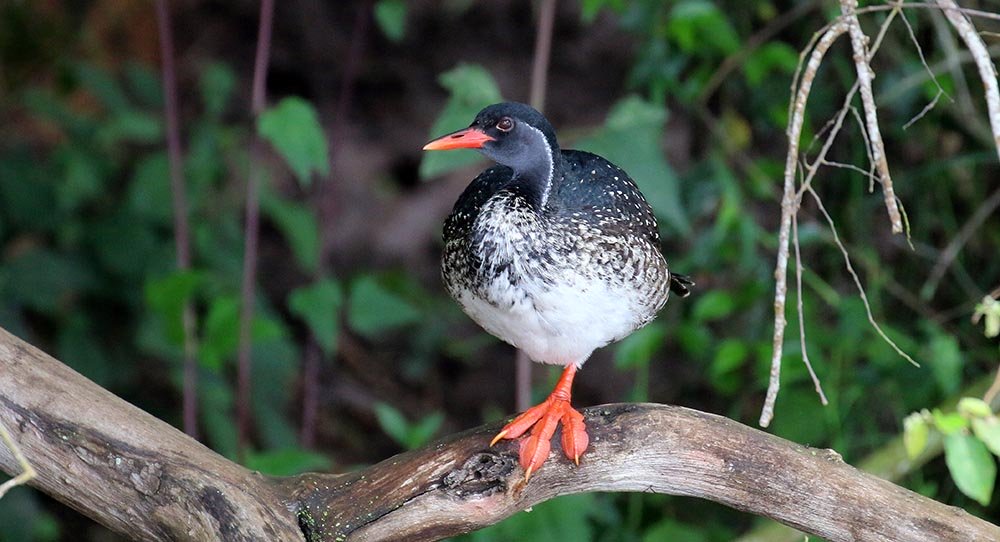 Male African Finfoot, (Mburo Lake, Uganda)
Male African Finfoot, (Mburo Lake, Uganda)The Shoebill was until recently considered and called a Stork, but genetic evidence suggests it is more related to the Pelicans (and Hammerkop).
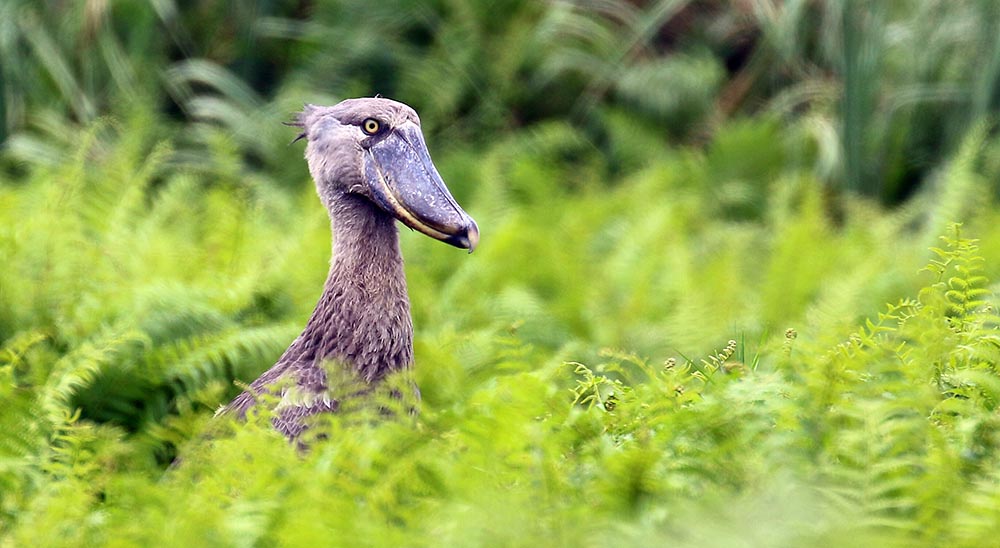
While there is a huge range of mammals across the expansive savannas and drier areas of Africa, the fresh waterways entice some of these species in for an occasional drink. Others come in for a wallow, such as African Buffalo.
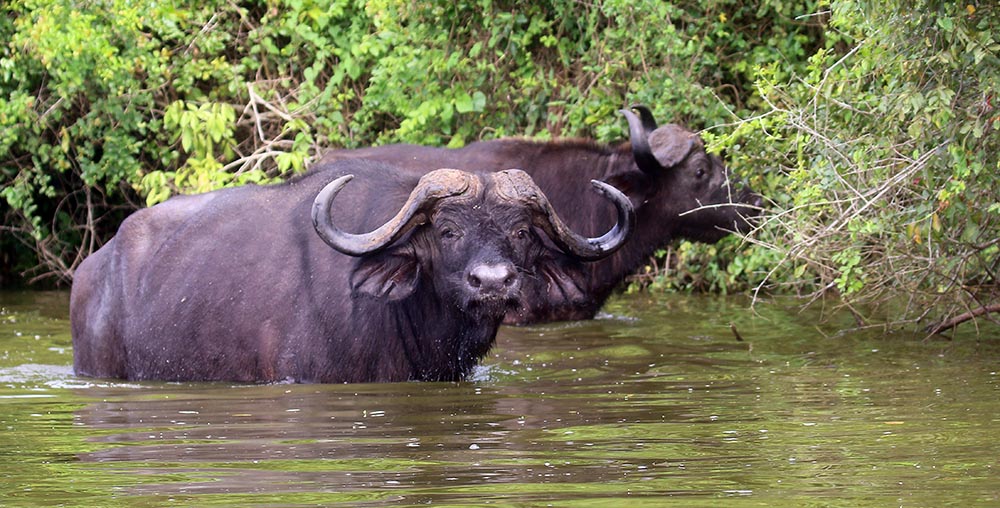
There are also some mammals that spend much more of their time around these freshwater areas, such as hippos...
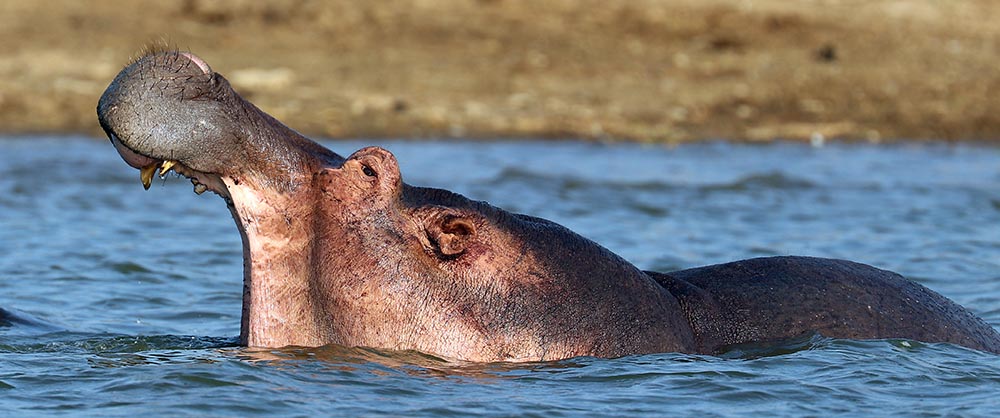 (Kazinga Channel)
(Kazinga Channel)By day, hippos hang out with other hippos in the water. There will be one dominant male guarding a group of females and young. In biological terms a group of hippos is a pod or a herd, but in the literary term it is known as a 'bloat'.
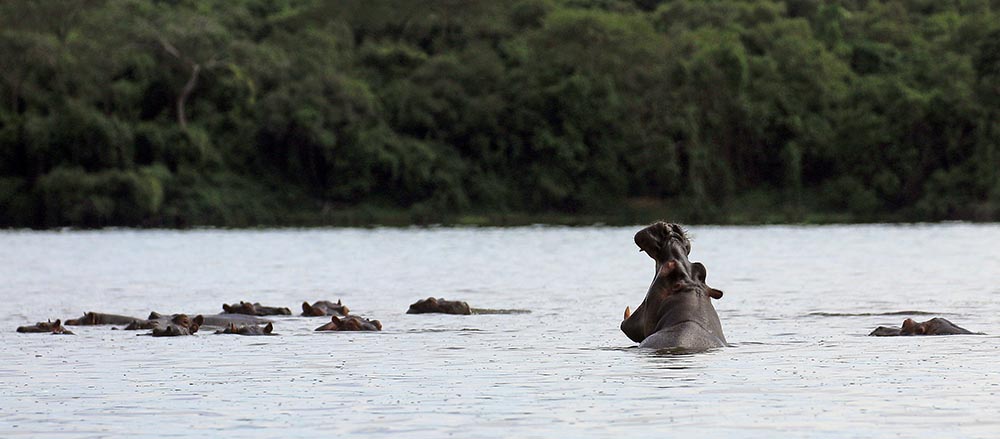
Places to see African wetlands...
The capital and biggest city in Uganda is Kampala, and this is located on the massive Lake Victoria. Not too far from the city are the Mabamba wetlands. This is one of the best places to see the bizarre and elusive Shoebill. There are some great cruises along rivers in Africa. The Kazinga Channel is in Queen Elizabeth National Park, Uganda. Another one is the Victoria Nile River, Murchison Falls National Park, which climaxes with views of the falls. The Lake Mburo cruise in Uganda is one the best places to see African Finfoot. For small wetland on the edge of tropical rainforest, check out Bigodi Wetlands Sanctuary, near Kibale, Uganda.
